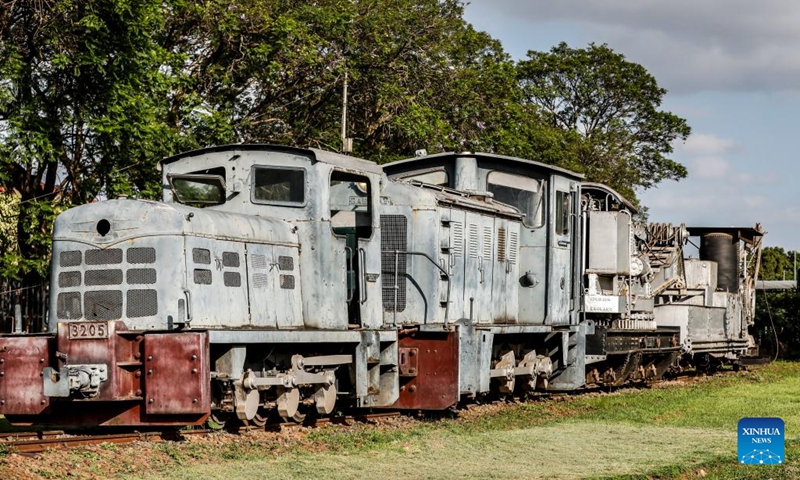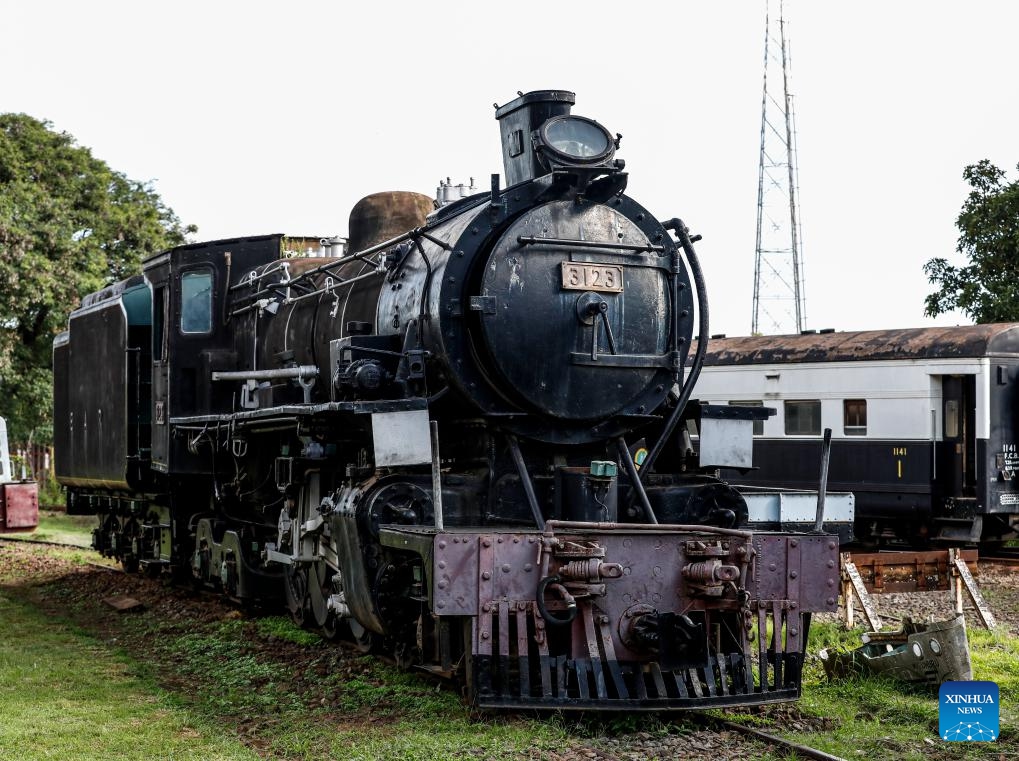
Photo taken on Nov. 27, 2023 shows a locomotive prototype at the Nairobi Railway Museum in Nairobi, Kenya. The Nairobi Railway Museum, nestled in Nairobi's bustling downtown, remains a popular destination for both locals and tourists eager to delve into Kenya's rich history(Photo: Xinhua)

Photo taken on Nov. 27, 2023 shows a locomotive prototype at the Nairobi Railway Museum in Nairobi, Kenya. The Nairobi Railway Museum, nestled in Nairobi's bustling downtown, remains a popular destination for both locals and tourists eager to delve into Kenya's rich history.(Photo: Xinhua)

A visitor views exhibits at the Nairobi Railway Museum in Nairobi, Kenya, on Nov. 27, 2023. The Nairobi Railway Museum, nestled in Nairobi's bustling downtown, remains a popular destination for both locals and tourists eager to delve into Kenya's rich history.(Photo: Xinhua)

Sevily Mwailemi, a locomotive driver with over three decades of experience, touches a locomotive prototype at the Nairobi Railway Museum in Nairobi, Kenya, on Nov. 27, 2023. The Nairobi Railway Museum, nestled in Nairobi's bustling downtown, remains a popular destination for both locals and tourists eager to delve into Kenya's rich history.(Photo: Xinhua)
The Nairobi Railway Museum, nestled in Nairobi's bustling downtown, remains a popular destination for both locals and tourists eager to delve into Kenya's rich history.
Housing an array of archived literature, locomotive prototypes and aging railway tracks, the museum serves as a vivid storyteller of Kenya's evolution from a colonial outpost to an independent nation, relentlessly on the move.
Sevily Mwailemi, a 58-year-old locomotive driver with over three decades of experience, emphasized the pivotal role of Kenya's history tied to its railway infrastructure.
The first meter gauge railway snaking from Kenya's port city of Mombasa to the hinterlands, ending at the Ugandan border, was constructed by the British colonialists from 1896 to around 1901. Dubbed the "Iron Snake," the railway facilitated the transportation of raw materials, solidifying British colonial economic interests.
After Kenya gained independence in 1963, the meter gauge railway persisted in its role of cargo and passenger transportation. And diesel-powered locomotives replaced steam engines.
However, Mwailemi said the lingering colonial legacy was associated with the old railway despite its contribution to Kenya's development. Having honed his skills along this historic line for over three decades, he transitioned in 2021 to the Chinese-funded Mombasa-Nairobi Standard Gauge Railway (SGR), which he said has significantly contributed to the nation's economy.
"The SGR I can say is the largest project since independence. It handles most imports into Kenya and its neighbors. It is one of the largest contributors to our country's economy," Mwailemi said.
Launched in 2017, the 472-kilometer Mombasa-Nairobi SGR drastically reduced travel time and emerged as the preferred choice for commuters, playing a pivotal role in stimulating commerce and empowering smaller towns along its corridor.
Mwailemi said that the SGR passenger service, dubbed Madaraka Express, is a symbol of pride for Kenyans. "Madaraka simply means independence and self-governance," said Mwailemi, adding that he is gradually learning new technologies associated with the modern commuter train service.
The Mombasa-Nairobi SGR, often referred to as a fruit of China-proposed Belt and Road Initiative (BRI), is also a flagship project of Kenya's Vision 2030 long-term development blueprint. It is a critical component of the northern corridor of the East African Railway Network and has a phase 2A which runs from Nairobi to Rift Valley town of Naivasha, covering 120 kilometers.
The SGR has operated seamlessly for over 2,300 days, ferrying millions of passengers and tons of goods, contributing significantly to Kenya's socioeconomic growth.
Dennis Munene, executive director of the China-Africa Center based in Nairobi, highlighted the contrast between the extractive nature of the old railway and the developmental impact of the SGR.
"The old Kenya-Uganda railway was more of an extractive railway where colonial masters used to get raw materials from the hinterland to the Indian Ocean for shipping to their countries," Munene said, noting that the SGR, a collaborative effort between China and Kenya, fosters regional integration and inclusive development.
As Kenya prepares to celebrate its 60th independence anniversary, Munene emphasized the continued significance of railway development in steering a prosperous and inclusive future for the nation.
